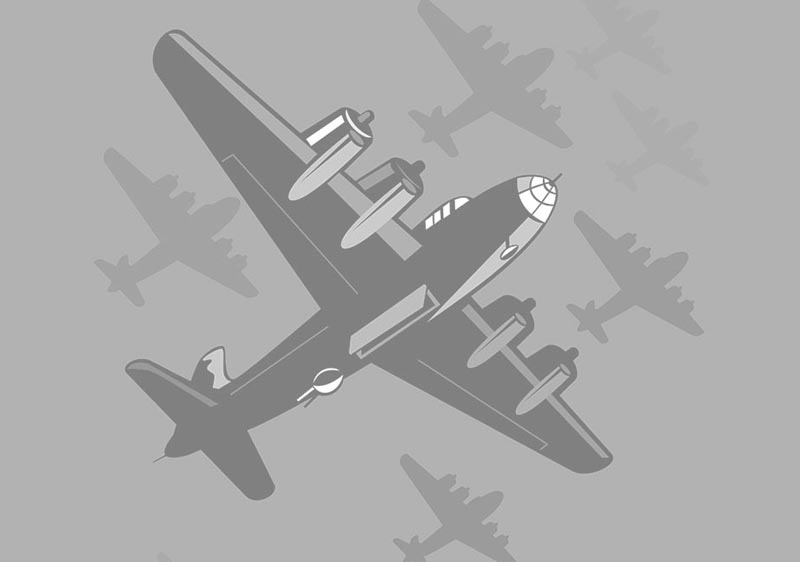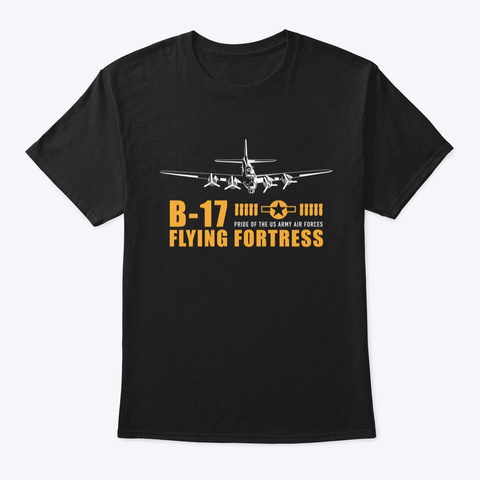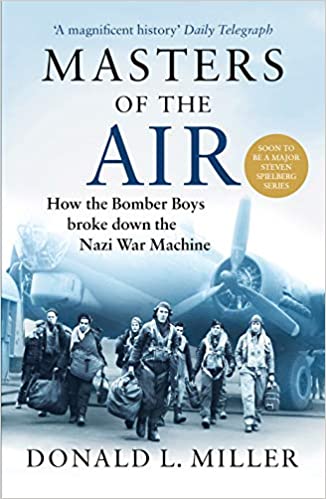
Production-block:
B-17F-30-DL: 42-3149 to 42-3188
Manufacturer:
Douglas
- Bomb Group:
- 306th Bomb Group
- 379th Bomb Group
- Bomb Squadron:
- 423rd Bomb Squadron
- 527th Bomb Squadron
- RCL: RD-Z, FO-S
History of
B-17 42-3167 / Ye Olde Pube
Delivered Cheyenne 6/3/43; Dow Fd 15/4/43; Assigned 423BS/306BG [RD-Z] Thurleigh 19/4/43; transferred 527BS/379BG [FO-S] Kimbolton 17/6/43; battle damaged over Bremen 20/12/43, with Charlie Brown, Co-pilot: Pinky Luke, Navigator: Al Sadok, Bombardier: Bob Andrews, Flight engineer/top turret gunner: Frenchy Coulombe, Radio Operator: Dick Pechout, Ball turret gunner: Sam Blackford, Waist gunner: Lloyd Jennings (8 Returned to Duty); Waist gunner: Alex Yelesanko (wia later died),Tail gunner: Hugh Eckenrode (2 Killed in Action); force landed Seething Afd, Nfk; 2 BAD Warton 4/4/44; never flew in action again. Returned to the USA Homestead 16/4/44; Reconstruction Finance Corporation (sold for scrap metal in USA) Altus 11/8/45. YE OLDE PUB.
Last updated: 13. September 2017
B-17 42-3167 / Ye Olde Pube Details
Charlie Brown and Franz Stigler incident
The Charlie Brown and Franz Stigler incident occurred on 20 December 1943, when, after a successful bomb run on Bremen, 2nd Lt Charles “Charlie” Brown’s B-17 Flying Fortress (named “Ye Olde Pub“) was severely damaged by German fighters. Luftwaffe pilot Franz Stigler had the opportunity to shoot down the crippled bomber, but did not. After an extensive search by Brown, the two pilots met each other 40 years later and developed a friendship that lasted until Stigler’s death in March 2008.[3]
Pilots
2nd Lt Charles L. “Charlie” Brown (“a farm boy from Weston, West Virginia”, in his own words) was a B-17F pilot with the 379th Bombardment Group of the United States Army Air Forces’ (USAAF) 8th Air Force, stationed at RAF Kimbolton in England.[4][5] Franz Stigler, a former airline pilot from Bavaria, was a veteran Luftwaffe fighter pilot attached to Jagdgeschwader 27 (fighter band 27); at the time, he had 27 victory tallies to his name and would be eligible for the coveted Knight’s Cross with one more downed enemy bomber (the required number of victories was 30). (In Nazi Germany, the shooting down of a bomber aircraft was worth 3 points compared to a fighter’s one.) [6][7]
Bremen mission
The mission was the Ye Olde Pub crew’s first and targeted the Focke-Wulf 190 aircraft production facility in Bremen. The men of the 527th Bombardment Squadron were informed in a pre-mission briefing that they might encounter hundreds of German fighters. Bremen was guarded by 250 flak guns. Brown’s crew was assigned to fly “Purple Heart Corner,” a spot on the edge of the formation that was considered especially dangerous because the Germans loved to target the edges instead of shooting straight through the middle of the formation. However, since one bomber had to turn back due to mechanical problems, Brown was told to move up to the front of the formation.[8]
For this mission, Ye Olde Pub’s crew consisted of:
- Second Lieutenant Charlie Brown: pilot / aircraft commander[9]
- Second Lieutenant Spencer “Pinky” Luke: co-pilot[10]
- Second Lieutenant Al “Doc” Sadok: navigator[11]
- Second Lieutenant Robert “Andy” Andrews: bombardier[11]
- Sergeant Bertrund “Frenchy” Coulombe: top turret gunner and flight engineer[12]
- Sergeant Dick Pechout: radio operator[13]
- Sergeant Hugh “Ecky” Eckenrode: tail gunner[13]
- Sergeant Lloyd Jennings: left waist gunner[13]
- Sergeant Alex “Russian” Yelesanko: right waist gunner[14]
- Sergeant Sam “Blackie” Blackford: ball turret gunner[15]
Bomb run
Brown’s B-17 began its 10-minute bomb run at 27,300 ft (8,300 m) with an outside air temperature of −60 °C (−76 °F). Before the bomber released its bomb load, accurate flak shattered the Plexiglas nose, knocked out the number two engine and further damaged the number four engine, which was already in questionable condition and had to be throttled back to prevent overspeeding. The damage slowed the bomber and Brown was unable to remain with his formation and fell back as a straggler – a position from which he came under sustained enemy attacks.[16]
Fighter attacks
Brown’s straggling B-17 was now attacked by over a dozen enemy fighters (a mixture of Messerschmitt Bf 109s and Focke-Wulf Fw 190s) of JG 11 for over 10 minutes.[17] Further damage was sustained, including damage to the number three engine, which would produce only half power (meaning the aircraft had at best 40% of its total rated power available). The bomber’s internal oxygen, hydraulic and electrical systems were also damaged, and the bomber lost half of its rudder and its port (left side) elevator, as well as its nose cone. Many of the gunners’ weapons then jammed, probably as a result of loss of the onboard systems leading to frozen mechanisms (the ground crew did not oil the guns correctly), leaving the bomber with only two dorsal turret guns and one of three forward-firing nose guns (from eleven available) for defense.[18] Most of the crew were wounded: the tail gunner, Eckenrode, had been decapitated by a direct hit from a cannon shell, while Yelesanko was critically wounded in the leg by shrapnel, Blackford’s feet were frozen due to shorted-out heating wires in his uniform, Pechout had been hit in the eye by a cannon shell, and Brown was wounded in his right shoulder.[19] The morphine syrettes onboard froze, complicating first aid efforts by the crew, while the radio was destroyed and the bomber’s exterior heavily damaged. Miraculously, all but Eckenrode survived.[19]
Franz Stigler
Brown’s damaged bomber was spotted by Germans on the ground, including Franz Stigler (then an ace with 29 victories), who was refueling and rearming at an airfield. He soon took off in his Messerschmitt Bf 109 G-6 (which had a .50 caliber Browning machine gun bullet embedded in the radiator, which risked the engine overheating) and quickly caught up with Brown’s plane. Through the damaged bomber’s airframe Stigler was able to see the injured and incapacitated crew. To the American pilot’s surprise, Stigler did not open fire on the crippled bomber. Stigler recalled the words of one of his commanding officers from Jagdgeschwader 27, Gustav Rödel, during his time fighting in North Africa, “If I ever see or hear of you shooting at a man in a parachute, I will shoot you myself.” Stigler later commented, “To me, it was just like they were in a parachute. I saw them and I couldn’t shoot them down.”
Twice, Stigler tried to get Brown to land his plane at a German airfield and surrender, or divert to nearby neutral Sweden, where he and his crew would receive medical treatment and be interned the remainder of the war. Brown and the crew of the B-17 didn’t understand what Stigler was trying to mouth and gesture to them and so flew on. Stigler later told Brown he was trying to get them to fly to Sweden. Stigler then flew near Brown’s plane in a formation on the bomber’s port side wing, so German antiaircraft units would not target it; he then escorted the damaged B-17 over the coast until they reached open water. Brown, unsure of Stigler’s intentions at the time, ordered his dorsal turret gunner to point at Stigler but not open fire in order to warn him off. Understanding the message and certain that the bomber was out of German airspace, Stigler departed with a salute.[16]
Landing
Brown managed to fly the 250 mi (400 km) across the North Sea and land his plane at RAF Seething, home of the 448th Bomb Group and at the postflight debriefing informed his officers about how a German fighter pilot had let him go. He was told not to repeat this to the rest of the unit so as not to build any positive sentiment about enemy pilots. Brown commented, “Someone decided you can’t be human and be flying in a German cockpit.” Stigler said nothing of the incident to his commanding officers, knowing that a German pilot who spared the enemy while in combat risked execution. Brown went on to complete a combat tour.[3] Franz Stigler later served as a Messerschmitt Me 262 jet-fighter pilot in Jagdverband 44 until the end of the war.
Post war and meeting of pilots
After the war, Brown returned home to West Virginia and went to college, returning to the newly established U.S. Air Force in 1949 and serving until 1965. Later, as a State Department Foreign Service Officer, he made numerous trips to Laos and Vietnam. But in 1972, he retired from government service and moved to Miami to become an inventor.
Stigler moved to Canada in 1953 and became a successful businessman.
In 1986, the then-retired Lieutenant Colonel Brown was asked to speak at a combat pilot reunion event called a “Gathering of the Eagles” at the Air Command and Staff College at Maxwell AFB, Alabama. Someone asked him if he had any memorable missions during World War II; Brown thought for a minute and recalled the story of Stigler’s escort and salute. Afterwards, Brown decided he should try to find the unknown German pilot.
After four years of searching vainly for U.S. Army Air Forces, U.S. Air Force and West German Air Force records that might shed some light on who the other pilot was, Brown hadn’t come up with much. He then wrote a letter to a combat pilot association newsletter. A few months later, Brown received a letter from Stigler, who was now living in Canada. “I was the one”, it said. When they spoke on the phone, Stigler described his plane, the escort and salute confirming everything Brown needed to hear to know he was the German fighter pilot involved in the incident.
Between 1990 and 2008, Charlie Brown and Franz Stigler became close friends and remained so until their deaths within several months of each other in 2008.[5][20]
Source: Charlie Brown and Franz Stigler incident, https://en.wikipedia.org/w/index.php?title=Charlie_Brown_and_Franz_Stigler_incident&oldid=799592783 (last visited
Sept. 13, 2017).
Videos about Charlie Brown and Franz Stigler incident
Franz Stigler & Charlie Brown BCTV 1997
https://www.youtube.com/watch?v=ZRKQvmT3Xhs
Bf 109 pilot Franz Stigler and B-17 pilot Charlie Brown’s first meeting
Eine wahre Geschichte
https://www.youtube.com/watch?v=fblEKytF140






07. May 2021 access_time 20:10
is there any information about the Ye Olde Pub, before it was transferred from the 306th bomber group and 423rd bomb squad? All I am able to find is information, articles, and websites about the Charlie Brown and Franz Stigler incident, which is a little bit frustrating as it makes it hard to find any other information about the bomber. I am also doing a research project on the Ye Olde Pub for my history class, but again I am having a difficult time, due to my lack of experience in researching for this kind of information.